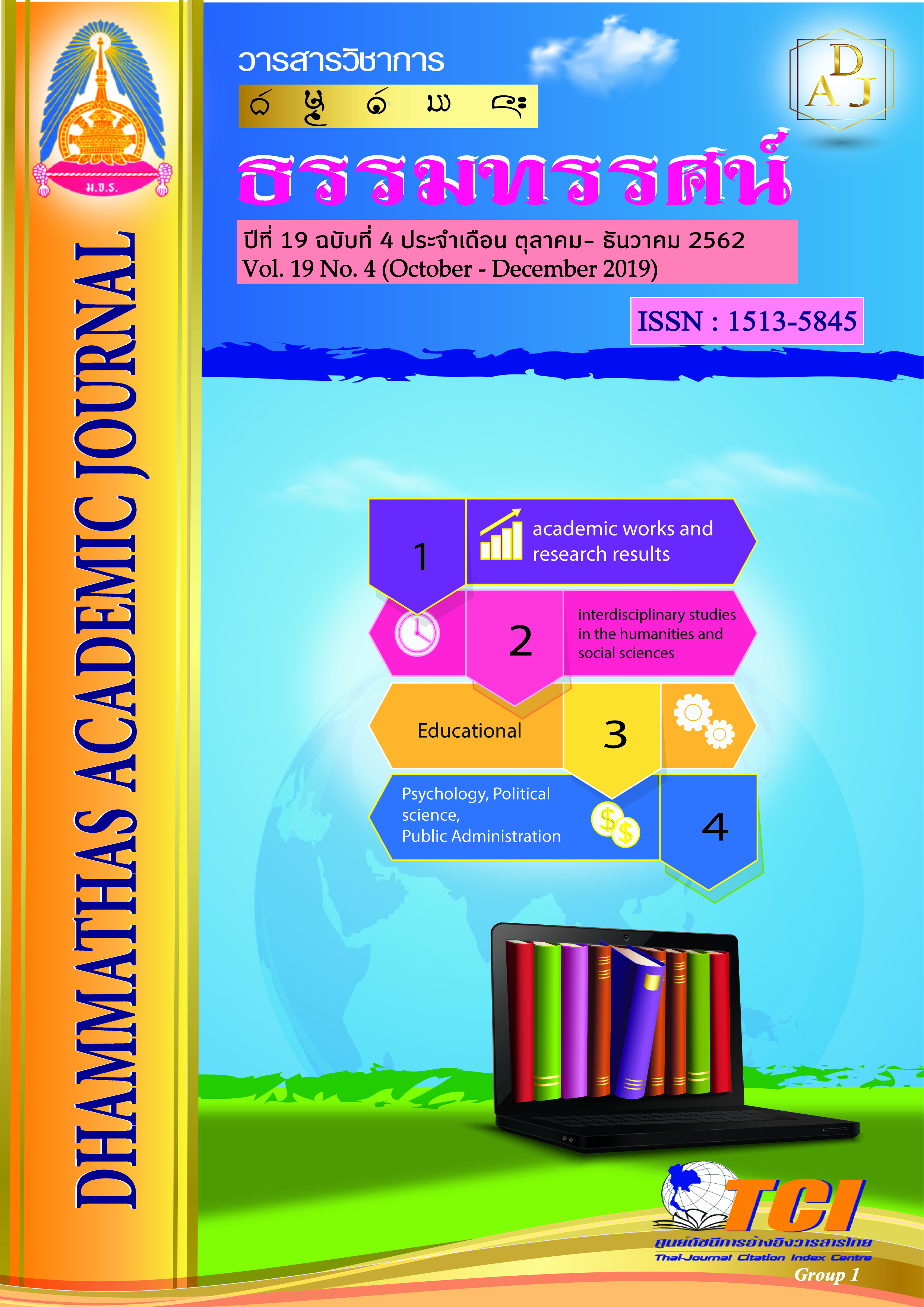The Effect of Gender and Personality Differences in Young Adults on the Emotional Arousal of Digitalized Sounds: An Even-Related Potential Study
Main Article Content
Abstract
The purpose of this study was to design experimental tasks of arousal digitized sounds which stimulated emotional arousal in young adults and to study the emotional arousalby focusing onevent-related potential studies between gender and personality. The participants were 80 undergraduates from Burapha University, academic year 2017. The materials consisted of arousal digitized sounds tasks, Self-Assessment Manikin (SAM), and NeuroScan system. The data were analyzed by Two-way ANOVA. The purpose of this study was to design experimental tasks of arousal digitized sounds which stimulated emotional arousal in young adults and to study the emotional arousalby focusing onevent-related potential studies between gender and personality. The participants were 80 undergraduates from Burapha University, academic year 2017. The materials consisted of arousal digitized sounds tasks, Self-Assessment Manikin (SAM), and NeuroScan system. The data were analyzed by Two-way ANOVA.
The research results were that: the arousal digitized sounds tasks consisted of 2 blocks; each block of 12 stimuli and 26 seconds for each, classified in 2 categories which were calm and excitement. The EEGs of youth adults while listening to arousal digitized sounds which included excitement and calm classified by gender had found in Frontal Lobe; F3, F4, F7 and F8, Temporal lobe; T7, T8. Regarding extrovert and neutral personality, the EEGs had found in Frontal Lobe; F3, F4, F7, F8, FC1, FC2, FC6, FZ and FPZ. The interaction between gender and personality had found in Frontal Lobe; FZ, FC1, FC2, FC6, FC5, FP1, FP2, F3, F4, FZ, F8 and FPZ, Central Lobe; C3, C4, CP1 and CZ, Parietal Lobe; P4 and P8, Occipital Lobe; O1 and O2.

